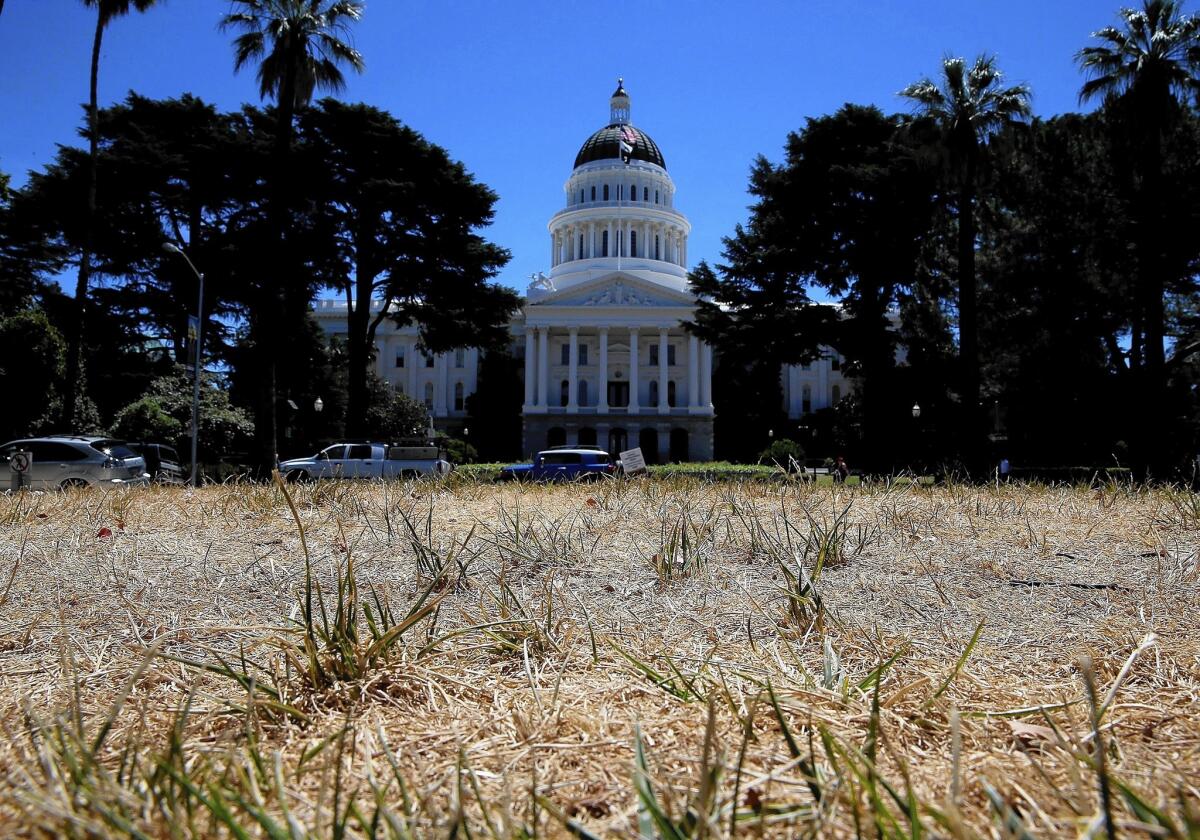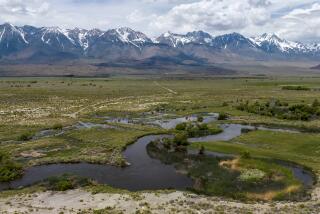Southland falls short of achieving 20% voluntary cut in water use

Southern Californians have fallen far short of achieving the 20% voluntary cut in water use sought by Gov. Jerry Brown in the face of the deep drought afflicting every corner of the state.
A recent statewide survey found that urban water use in coastal Southern California declined by only 5% from January through May. And a Times review of data from the region’s three largest cities shows that use actually went up over the last year.
Local water officials attribute the meek response in part to the conservation successes of recent years, which they say make it more difficult to realize further reductions.
“It’s a little bit more of a struggle now,” said Ken Weinberg, director of water resources for the San Diego County Water Authority, which recorded a 4% uptick in overall demand since last summer after a 27% drop in daily per capita use from 2007 to 2013. “We got rid of a lot of waste.”
The Southland is not alone in missing the goal for voluntary reductions that Brown set when he proclaimed a drought emergency in January. No region of the state has met it, according to the survey of urban agencies conducted by the State Water Resources Control Board.
Statewide, average urban use from January through May fell 5% compared with the same period from 2011 to 2013.
A USC Dornsife/Los Angeles Times poll in late May found that a majority of California voters said the drought has had little or no impact on their daily lives. And while outdoor watering restrictions are in place in Los Angeles and many other cities, Southland agencies have enough supplies in regional reserves to avoid severe rationing this year.
But that is no reason for complacency, warned state board chair Felicia Marcus.
“We have no idea how long this drought will last,” Marcus said. “Having a couple of years of storage available isn’t something that should help you sleep at night.”
She said that the increasing chances of El Niño conditions in coming months are no guarantee of a wet winter, as some El Niño years are dry. “It’s really not a time to relax and think we’re out of the woods.”
Next month the state board will consider emergency regulations that could crack down on urban use.
“I guarantee you we’re not going to say everybody has to cut by a certain percentage,” Marcus said. “We will probably focus on wasteful practices.”
She offered as an example actions the state board took during the severe 1976-77 drought, when it ordered Mission Viejo to stop filling ornamental lakes and fountains that didn’t use recirculating water.
Still, she added, “If it doesn’t rain next year, it’s a whole other conversation.”
Billing problems at the Los Angeles Department of Water and Power have left the DWP without a good record of actual water use this year. But total supply from last July through April — roughly parallel to demand — rose 3% compared with the same period in the previous fiscal year.
The trend was the same in Long Beach, where total water use from October through May rose nearly 1% compared with the same months a year ago.
As the region enters the thirsty summer season, water agencies are stepping up their conservation campaigns. Los Angeles recently bumped up its cash-for-grass rebates and is now paying residential customers $3 a square foot to replace lawns with drought-tolerant plants and drip irrigation.
The DWP is launching a media campaign and is ramping up enforcement of a conservation ordinance that limits the days and duration of outdoor watering. The restrictions have been mandatory since 2009, but as any drive around Los Angeles demonstrates, they’re not necessarily heeded.
Daily per capita use in Los Angeles dropped from a high of 187 gallons in fiscal year 1987 to a low of 122 gallons in fiscal year 2011. It crept up to 129 gallons last year. But the city’s overall water demand remains less than in 1970, despite the addition of 1 million residents.
“We’re probably one of the leaders in conservation throughout the state,” said Penny Falcon, the DWP’s manager of conservation policy. “This time around our campaign basically says, ‘Keep saving water, L.A.’”
With roughly 40% to 60% of drinking water in Los Angeles used for landscape irrigation, the agency is focusing on outdoor use. Falcon said there has been a tenfold increase in applications for the turf-removal rebate, which was boosted in May from $2 a square foot.
But lawns very much remain the norm in Southern California, and officials say it’s tougher to change homeowners’ outdoor watering habits than it is to get them to install low-flow toilets or water-efficient washing machines.
“Outdoor conservation is a much more intricate matter,” said Jason Foster, conservation director for the San Diego County Water Authority, which serves the county’s population centers. “You can’t tell them to simply plant rocks everywhere.”
Twitter: @boxall







